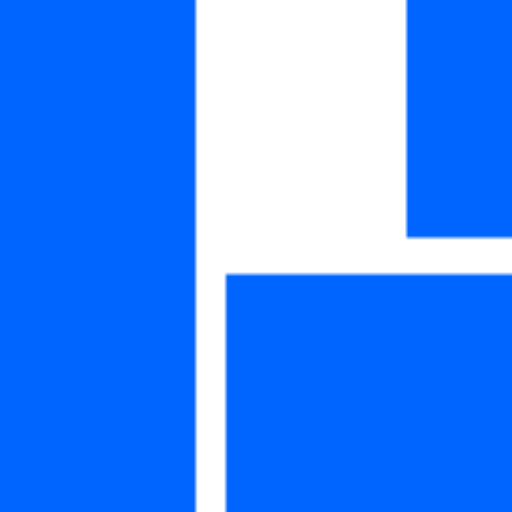
Neural-dust-the-next-leap-in-ai-powered-medical-interfaces
This blog explores Neural Dust, a futuristic AI-powered technology using microscopic, wireless sensors to monitor and interact with internal organs and neural activity. It's a game-changer for medical diagnostics, brain-computer interfaces, and personalized healthcare.
Imagine a future where tiny, invisible particles inside your body constantly relay real-time health insights to your doctor, predicting illnesses before symptoms appear. That future isn't a sci-fi movie anymore. It's called Neural Dust – and it could change how we understand our bodies.
Neural Dust is a cutting-edge concept combining ultra-small wireless sensors with AI to monitor neural and muscular activity. These micro-scale sensors, often smaller than a grain of sand, can be sprinkled inside the human body to detect electrical signals from muscles and nerves. With AI interpreting these signals, we’re looking at a whole new level of diagnostics, prosthetics control, and personalized treatment.
In this blog, we’ll unpack what Neural Dust is, how it works, and why it's creating such a buzz in tech and healthcare circles. We’ll look at the underlying technology, real-world applications, current research, and the potential it holds for the future.
"The human body is the next frontier for computing." — Kris Pister, UC Berkeley
Whether you're an AI enthusiast, a healthcare professional, or someone curious about the future of technology, this blog will give you a solid (and exciting) overview of one of the most innovative ideas making waves today.

Recent Developments and Data:
- In 2024, Stanford researchers demonstrated Neural Dust in live subjects, enabling wireless communication with nerves over 2 cm deep.
- UC Berkeley developed Neural Dust motes as small as 0.3 mm with successful results in animal models.
- A 2023 Nature study reported over 90% signal accuracy from Neural Dust implants in spinal monitoring.
- AI models integrated with Neural Dust showed a 70% improvement in prosthetic limb responsiveness.
- By 2025, the global Neural Interface market is projected to hit $19.5 billion, with Neural Dust driving 20% of innovation.

How Neural Dust Works:
- Tiny piezoelectric sensors convert mechanical vibrations into electrical signals.
- AI models process these electrical signals to identify patterns, anomalies, or specific nerve impulses.
- Wireless data transmission enables continuous, real-time health monitoring.
Key Features:
- Miniaturization: Sensors are microscopic, ensuring minimal intrusion.
- AI Integration: Smart analysis of complex signals for faster, more accurate insights.
- Wireless Communication: Real-time data collection without wires or implants.
- Biocompatibility: Made with materials safe for long-term presence in the body.
Benefits:
- Non-invasive Diagnostics: Imagine knowing about nerve inflammation before it causes pain.
- Enhanced Prosthetics: Thought-controlled limbs become more responsive.
- Continuous Monitoring: Chronic illness management becomes proactive.
- Data-Driven Healthcare: AI enables predictive analysis and early intervention.
Scalability:
- Neural Dust can be produced in large volumes due to its MEMS (microelectromechanical systems) base.
- AI models can scale effortlessly to process multi-channel input from dozens of sensors.
Security:
- Encrypted transmission of sensitive health data.
- Edge AI processing ensures data is anonymized and contextualized before storage.
Cost-Effectiveness:
- Mass manufacturing of MEMS devices reduces unit cost.
- Fewer hospital visits due to early detection and remote monitoring.
- Long-term cost savings for healthcare systems and insurance providers.
Useful links:
Now, let’s talk about where you can build or join projects like these.
Meet Workwall – a collaborative marketplace for tech minds and solution seekers. It's a platform where businesses post real-world tech problems and tech vendors or freelancers propose solutions. Picture a health startup needing an AI module to interpret Neural Dust signals – they could just post their requirement on Workwall. A developer skilled in edge-AI and signal processing can pick up the challenge, work on it, and deliver something impactful.
This marketplace isn’t just a job board – it's where innovation meets execution. With built-in tools for collaboration, milestone tracking, and even payment gateways, Workwall takes care of the backend while you focus on solving cool stuff.
One startup posted a requirement for an AI-based epilepsy detection module. Within a week, they had three prototype solutions from vendors across the globe. Now they’re piloting it in two hospitals.
Whether you're the next Elon Musk of med-tech or a brilliant coder looking to apply your AI skills, Workwall can connect you with the right opportunity. It’s like a LinkedIn-meets-GitHub-meets-Upwork, but purpose-built for technology projects.
Check it out here: www.workwall.com
As Neural Dust inches closer to commercial reality, it opens a world of opportunities for AI and health tech convergence. These microscopic sensors could become as common as fitness trackers, only a thousand times more insightful.
In the near future, you could get alerts on your smartwatch telling you that a specific nerve in your leg is overstimulated, days before you feel anything. And that's just the start. Neural Dust could help paralyzed patients regain partial control, allow athletes to monitor muscle fatigue at a granular level, or even support early Alzheimer’s diagnosis through subtle neural changes.
We're also looking at exciting crossovers – AI, AR/VR, quantum sensors, and more. Integrations like Neural Dust feeding real-time data into digital twins (virtual models of human bodies) could lead to full-blown personal health simulations.
If you’re into AI development, biomedical engineering, or just want to ride the wave of the next big thing, this is it. The blend of precision, miniaturization, and AI is something worth exploring, whether you’re building solutions, investing, or just staying informed.
Don’t miss out – bookmark this blog and keep checking back. We’ll be updating it regularly as new breakthroughs emerge.
Meanwhile, if you're inspired to start building, head over to Workwall and see what problems you can solve. Your next big project could literally be under the skin.
Stay curious. Stay connected. And maybe, start sprinkling some Neural Dust ideas of your own.

Follow us
Interested in more content like this? Follow us on


